Auschwitz is enlarged
16th May 1944: The scale of mass murder facilities is increased as train loads of Jews arrive from Hungary
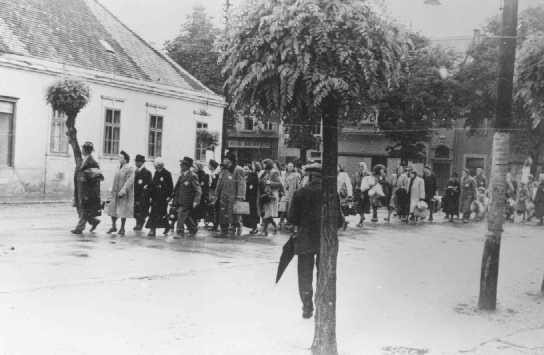

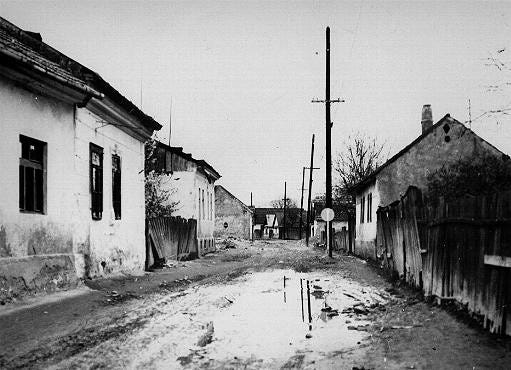
By early 1944, detailed reliable accounts of the Holocaust had reached the outside world - and had been condemned by the United Nations. The report of Rudolf Vrba, who had escaped from the Auschwitz in April, had also been circulated to the Allies by the Slovak resistance - but it would not be published until June 1944. Yet the Nazis were still able to embark on a new programme of mass murder. They now sought to kill all the Jews of Hungary, which Hitler had occupied in March 1944.
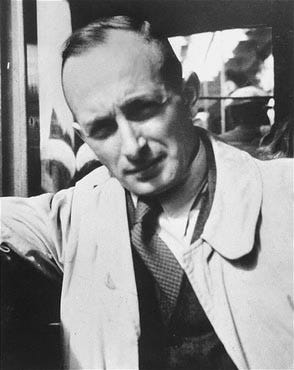
Allied leaders believed the best course of action was to concentrate on ending the war as soon as possible. There was still time for the Nazis to kill a lot more people.
At this time Auschwitz was not the leading 'camp' in the business of killing, far more Jews had been killed in the 'Operation Reinhard' death camps, which had begun industrial scale murder in 1942.
Then Auschwitz was chosen to receive the Hungarian Jews. There were at least another 500,000 men, women and children that the camp authorities expected to receive. The extermination facilities had to be expanded. Also the means for disposing of the bodies, as now the Nazis were determined to leave no trace of their crimes.
Filip Muller1 survived at Auschwitz as a prisoner in the Sonderkommando, dealing with the victims' property. He was one of the few eyewitnesses to survive the camp and write a detailed description of the process:
The two new pits had considerably increased the capacity of the four crematoria at Birkenau.
It was just a matter of adding the finishing touches. There was a constant stream of trucks delivering materials of all kinds, such as old railway sleepers, conifer branches, waste wood, beams, rags, large quantities of wood alcohol, barrels of waste lubricating oil, rammers, coarse and fine-meshed iron sieves, cement, wooden planks, boards and barrels of chlorinated lime. Wherever the fuel was stacked in the open, it was roofed over.
It was the middle of May 1944 when the first transports of Hungarian jews arrived in Birkenau. By now the Sonderkommando had been increased to 450 men, a number soon to be almost doubled. At the time when the machinery of extermination was running at full speed there were about 450 Hungarian, 200 Polish,180 Greek, 3 Slovak and 5 German Jews as well as 19 Russian prisoners of war, 5 Polish prisoners in ‘preventive custody’ and one Reichsdzutscher Kapo. Three more cremation pits were dug in the back yard of crematorium 5, making up the five Moll had ordered.
In addition, the farmhouse which had served as a place of extermination in 1942, was put in running order. Its four rooms served as gas chambers while an additional four cremation pits were dug outside. The changing rooms were located in three wooden barracks, and the whole complex was known as bunker 5.
There were now nine of these large pits in addition to the crematorium ovens, making it possible to burn an almost unlimited number of corpses. All these installations originated in the brain of mass murderer Moll who had succeeded in turning a small corner of the earth’s surface into something of such unspeakable vileness that it made Dante’s Infernow appear like a pleasure garden.
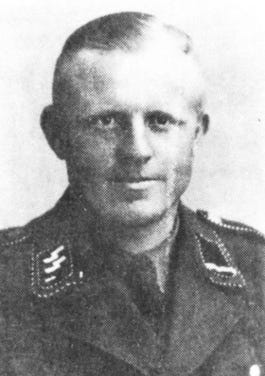
Almost daily several trains consisting, on average, of forty to fifty cattle trucks, arrived on the newly built ramp at Birkenau.
From the outset the camp authorities took rigorous care to obliterate all traces of their crimes. For this reason the ashes of the burnt corpses were thrown into fishponds or the river Vistula. In this connection Moll had thought up a new technique to expedite the removal of ashes. He ordered an area next to the pits adjoining crematorium 5 and measuring about 60 metres by 15 metres to be concreted; on this surface the ashes were crushed to a fine powder before their final disposal.
At the time this concreting work was in progress, the liquidation of Hungarian Jewry was in full swing. It seems incredible that eleven months before the end of the war it was possible for long trains to travel constantly back and forth between Hungary and Birkenau when one would have thought they were urgently required for the war effort.
Almost daily several trains consisting, on average, of forty to fifty cattle trucks, arrived on the newly built ramp at Birkenau. The trucks into which up to 100 people had been crammed were bolted; they were unlocked only when the train had reached its destination. The people were parched with thirst since, during their journey lasting several days, they had been given not a drop of water. Many died en route from the rigours of the journey.


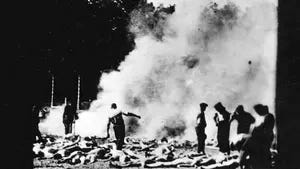
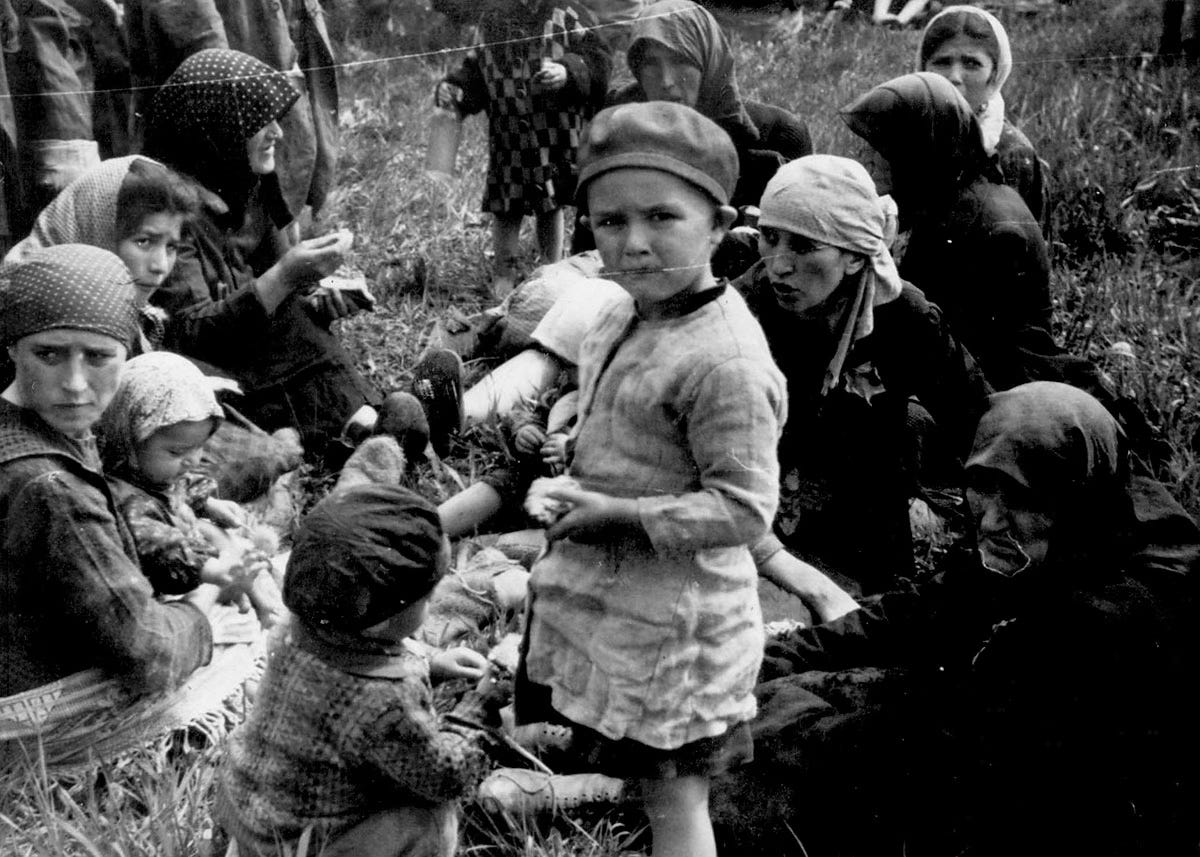
Heartbreaking. Infuriating.